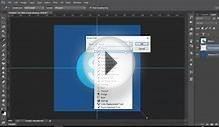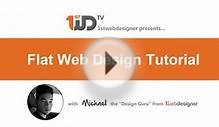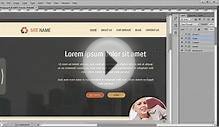
 Every so often, new ways of doing something sneak into our lives and work habits. Reason for this can be changing personal preferences, new technologies, or simply the urge to follow trends. A recent new habit in web design is a flat design approach. Flat describes a two dimensional design for a two dimensional screen.
Every so often, new ways of doing something sneak into our lives and work habits. Reason for this can be changing personal preferences, new technologies, or simply the urge to follow trends. A recent new habit in web design is a flat design approach. Flat describes a two dimensional design for a two dimensional screen.
For the last few years, skeuomorphism characterised modern and user-centered design. Now, it seems that we have somehow gotten used to the digital age and many of us don’t even remember the real-life counterparts that we tried to represent in our designs.
With flat web design, we take a step towards accepting the unique and abstract nature of the web. But are we dealing with a temporary trend, or are we facing a revolution in how we design for the web? Here are 5 reasons why flat web design might be a good new habit:
1. Flat web design is honest
 Probably the core concept of flat design is that it’s “honest”. You wonder what that means? It’s simple: Flat design acknowledges the two dimensional nature of screen design. There is no attempt to add any three dimensional effects or trick the user into thinking they are interacting with anything else than a flat screen.
Probably the core concept of flat design is that it’s “honest”. You wonder what that means? It’s simple: Flat design acknowledges the two dimensional nature of screen design. There is no attempt to add any three dimensional effects or trick the user into thinking they are interacting with anything else than a flat screen.
There are no shadows, no gradients, no patterns, no 3-D effects, or design elements representing real-world things. Instead, flat design makes use of colors, typography, a lot of white space, and a strict grid system for a clear and usable interface.
2. Flat web design is trendy
Some habits come from fashion. We want to stay up to date and that’s why we follow trends. Flat design is trendy — it’s fresh, clear, light, modern. And it goes hand in hand with other trends in web design, such as the use of typography and white space. Also, bright colors are finding their way back into the awareness of modern designers.
 Like with any other trend, we don’t know how long flat design will last. It might be a phase, but it might just as well trigger a little revolution in the field of web design. As long as we don’t know what it will be, try not to follow the trend blindly. Before flattening your design, make sure your target group is ready and your website is suited for this approach.
Like with any other trend, we don’t know how long flat design will last. It might be a phase, but it might just as well trigger a little revolution in the field of web design. As long as we don’t know what it will be, try not to follow the trend blindly. Before flattening your design, make sure your target group is ready and your website is suited for this approach.
3. Flat web design is usable
Flat design is not only very appealing, it is also very usable — if done right, obviously. Flat design is simple and reduced to a minimum. The idea is to remove all distracting design elements and really focus on the content and your users’ goals. Use visual cues, such as color and typography to guide your users and help them reach their goals.
Avoiding distraction does not make flat design the same as minimal design. This is where it becomes tricky. Strip down your design to make it as clear and simple as possible — but make sure you don’t remove cues that are essential for your users to successfully use your site.
 4. Flat web design is quick
4. Flat web design is quick
Flat web design radiates efficiency. Through the lack of distraction, your line of sight is directly drawn to the essential parts of the site. Not only can you reach your goals, you are also confident that you can do so in a short amount of time. While a different website might be just as usable, a flat design is not ashamed to brag about it.
In this case, bragging is not a bad thing. If you can convince your visitors that they will find what they are looking for — even before they started to look — you have taken a huge hurdle in terms of a better conversion.
5. Flat web design is scalable
Oak makes use of a flat design with a lot of white space, typography and color. The website is responsible and the content easily scales across different screen sizes.
Last but not least, flat design is easily scalable. This is in line with another recent trend in web design: responsive design. Mobile internet is getting more and more important and you should consider how your website looks like on different screen sizes. While realistic images and other design effects can be difficult to scale, flat design elements like color and typography can easily adapt to smaller screens.
For example, instead of having a carefully styled button, in flat web design a colored link will do. A patterned background image becomes a plain background color. Also, different content areas can easily be identified across different devices by using different colors.
Trend or revolution?
What do you think about flat web design? Is this something to take serious and do you see the advantages that come with this simplistic design approach? Or do you object and think it’s a trend we shouldn’t get too excited about? Let us know in the comments.
YOU MIGHT ALSO LIKE










